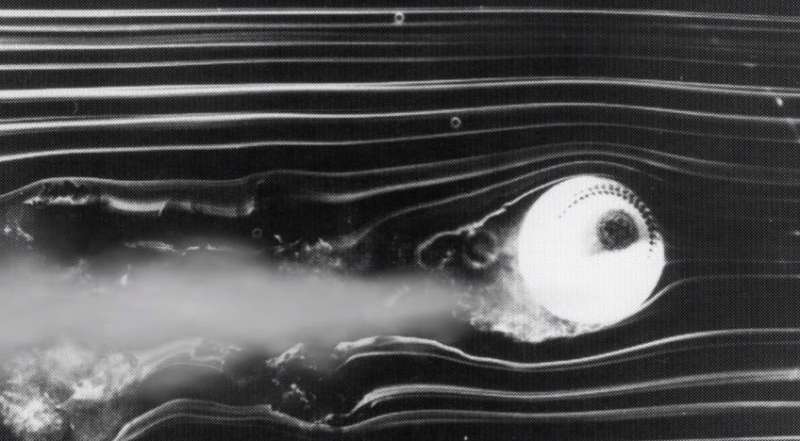July 13, 2016 report
'History Minute' that proved baseballs really do curve

(Phys.org)—The National Institute of Standards and Technology has released a "History Minute" video called "Thrown for a Curve," offering a recap of work done by Lyman Briggs and colleagues back in 1959, when he was head of what was then called the National Bureau of Standards—he and his team set out to solve the mystery of whether the curve ball—cleverly used in baseball—is really curved at all, or whether it's just an optical illusion, a lively topic for debate at the time.
A curve ball, for baseball non-aficionados, is a pitch thrown toward the batter, which moves in arc rather than a straight line, making it difficult for the batter to ascertain where the ball will be when it crosses the plate. Making things even more difficult for the batter is that from his perspective, the ball appears to be moving straight toward him initially, but then suddenly drops before arriving.
To find out, as noted in the paper published by the team in the American Journal of Physics, the team started by rigging a pitching machine to spin a baseball atop a tee that was then knocked forward by a projectile from a gun—they tried to capture the spin and curve using cameras, but found it too difficult to do so under such conditions. They also tried firing projectiles at a stationary ball set at some distance, but that did not work either.
To get a better view, the team began testing under more easily observable conditions—inside a wind tunnel. They would cause an object to spin, then let it drop down into the wind, where they could watch it curve and also take measurements by treating cardboard at the bottom with lampblack, which smeared as the object landed. Other tests using objects in water offered the same types of result. All in all, the team spent two years working on the project before announcing their results to the world.
The curve is real, the team reported, and it happens because when a baseball is spun by the movements of the pitcher's hand and wrist, a 'whirlpool' of air is created that follows with the ball—that whirlpool results in a different amount of air pressure on one side of the ball, which causes it to be pushed in the direction of lesser pressure. They noted that a baseball could curve as much as 17.5 inches when thrown by a professional baseball player, though it worked best at slower speeds—68 mph was found to be optimal. The results by the team had implications in other areas as well—most any object will curve, they noted, when spun in the right way, including rockets, cannonballs and missiles.
More information: Lyman J. Briggs. Effect of Spin and Speed on the Lateral Deflection (Curve) of a Baseball; and the Magnus Effect for Smooth Spheres, American Journal of Physics (1959). DOI: 10.1119/1.1934921
Journal information: American Journal of Physics
© 2016 Phys.org



















